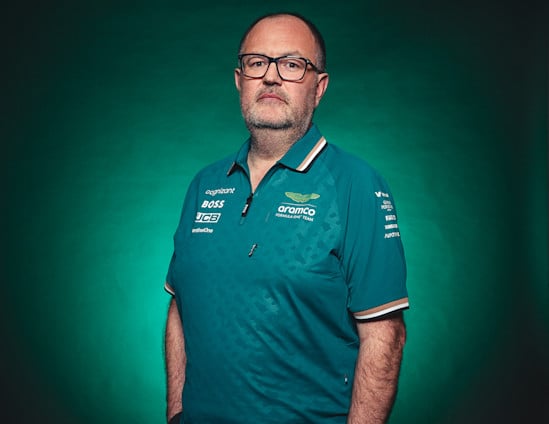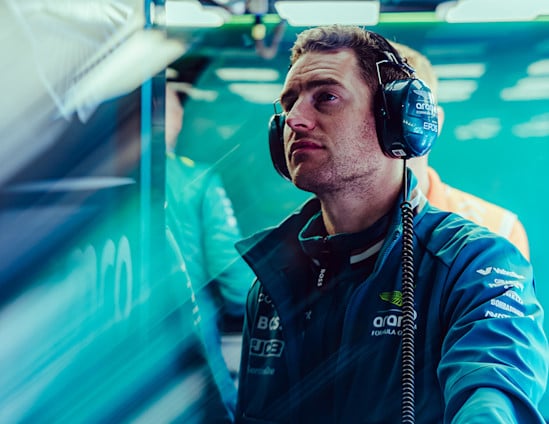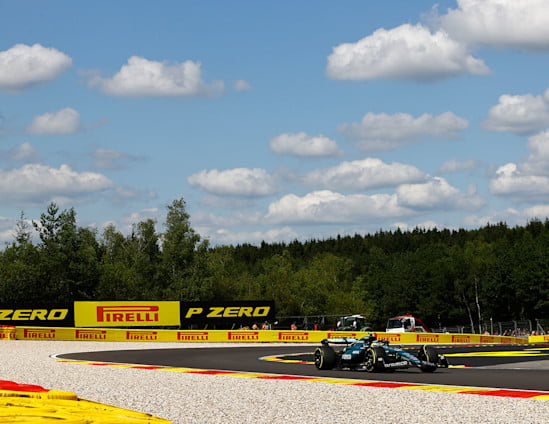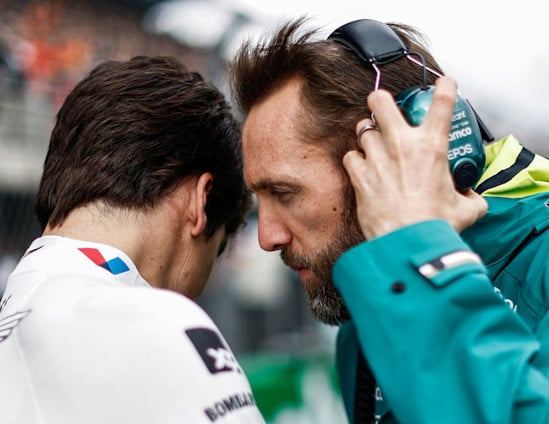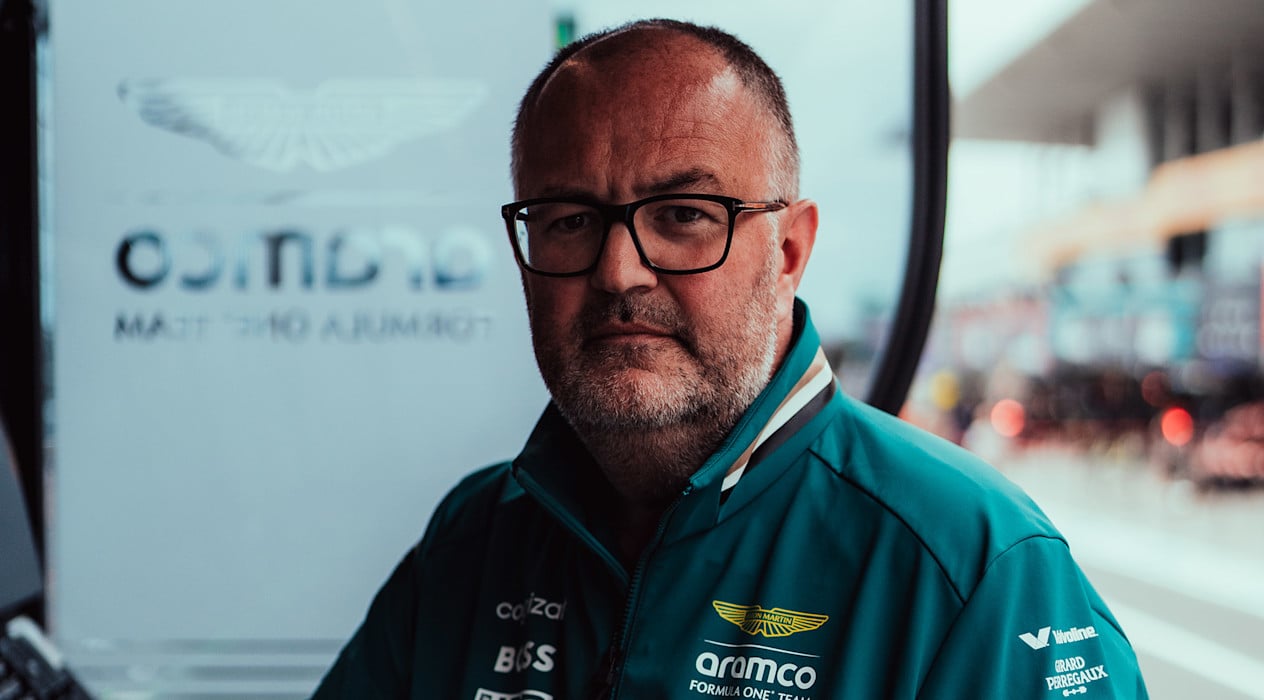

In association with our Global Trading Partner, AvaTrade, Aston Martin Aramco Performance Director Tom McCullough reveals some of the key variables the team contends with when formulating a race strategy.
Formula One is a 200mph game of chess. Each move is meticulously planned and carefully calculated by a talented team of strategists, who use cutting-edge software and huge pools of data to plot the quickest route to the chequered flag.
A complex quilt of variables stitched together to work in unison, Performance Director Tom McCullough highlights some of the key factors at play when formulating a plan of attack for any given Grand Prix.
"When you break strategy down the aim is relatively simple: get your car from the start to the end of a race as fast as possible," says Tom.
"Devising a strategy starts with what we call the Monte Carlo simulation – a way to model the probability of different outcomes that are difficult to predict due to different variables. This simulation is designed to work out the fastest strategy, considering the tyres available and the characteristics of the circuit.
"You plug that data into your software and ask, 'Without interacting with anyone else, what is the fastest way to do this race?' and it will provide an answer saying a two-stop strategy with stops on lap 12 and lap 32, for example.
"That's the baseline, but there's a host of other variables you must consider when building your strategy..."
Balancing risk and reward with AvaTrade
Performance Director Tom McCullough and our Global Trading Partner, AvaTrade, reveal the strategic decisions the team must make over a Grand Prix weekend.
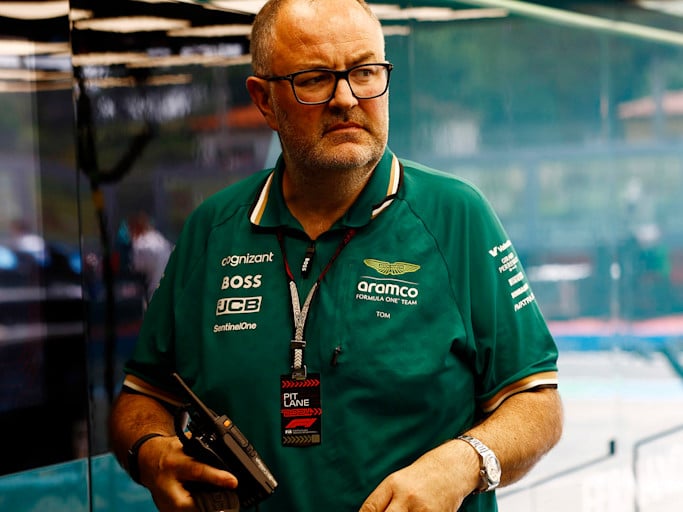
Variable #1: The tyres
"Tyres are crucial in F1 and managing them so they provide optimal performance throughout the race is at the heart of many strategic decisions.
"We consider tyre life, tyre degradation, and the difference in performance between the tyre compounds Pirelli provides – which consists of base performance difference between the compounds and difference in their rates of degradation.
"If you've got three tyre compounds that are very similar in pace, degradation, and life, it doesn't really matter which tyre you use; you'll tend to do as few pitstops as possible if the degradation is low. What often drives extra pitstops is high degradation or low tyre life, so establishing those variables is key.
"It's important to also understand the variables that can influence these tyre parameters.
"The three main factors that influence how the tyres work at a track are: how rough the tarmac is – generally the more abrasive the tarmac, the more the tyres degrade; how high the air and track temperature is – the hotter it is the more the tyres suffer; and how many high-speed corners a track has – a circuit with lots of high-speed corners will see higher degradation because you're putting more stress into the tyre.
"If a circuit has recently been resurfaced, that drastically influences levels of abrasion, track temperature, and grip levels in high-speed corners, as well as the difference in performance, tyre life, and degradation between each compound.
"Understanding what the tyres will do is one of the most important inputs into a strategy model. It can be the difference between picking the right or the wrong strategy."

Variable #2: The time spent making a pitstop
"Pitstop time loss is important to consider because you're trying to find the right balance between losing time in the pits versus staying out on track with tyres that are giving up performance.
"Additionally, when we decide to pit Lance or Fernando, we ideally want them to rejoin the race in free air following a stop so we use the pitstop time loss to calculate where they'd be relative to the rest of the field as they exit the pitlane.
"Time lost during a pitstop varies between roughly 20 and 30 seconds depending on the circuit. For example, Spa has one of the lowest pit losses because the pitlane is actually shorter than the track alongside it, and it runs inside the low-speed La Source hairpin.
"However, at a circuit like Monza where the cars go past the pitlane on the track at one of the highest speeds on the calendar, the pitstop time loss tends to be quite high."
Variable #3: The weather
"Weather has a huge impact on strategy. In dry weather, tyre degradation and the laptime performance between the compounds varies dramatically in relation to changes in air and track temperature.
"The regulations state that you must use at least two different compounds in dry conditions, which means you'll always have at least a one-stop race. However, that rule doesn't apply when it rains.
"In the wet, being on the right tyres at the right time is the key phrase. Getting the switch right between dry and wet tyres in changeable conditions can make or break a race. You're relying on feedback from the driver in the cockpit, laptime data if a competitor has already made the switch, and the weather radar, to make that call.
"In addition, rain increases the chance of accidents on track, so you need to be alive to that and factor in the higher probability of Safety Cars."

Variable #4: The Safety Car
"We study historic Safety Cars and Virtual Safety Cars (VSC) and their timing at each race. They tend to happen either at the start of a Grand Prix or around pitstops when cars are typically trying to pass each other.
"Of course, sometimes you have random Safety Car periods because cars can break down or a driver can make a mistake and have an accident, so you've always got to be ready to react.
"When a Safety Car comes out, or a VSC happens, the pack goes much slower on track than usual racing speeds and therefore the pitstop time loss is significantly reduced; if you can do a pitstop in those windows you can gain a lot of time.
"One of the reasons we often see cars waiting for a potential Safety Car is because, in an uninterrupted race, they may be unlikely to get a good result but taking advantage of a fortuitously timed Safety Car can change all that.
"There's an element of the unknown with Safety Cars because anything can happen in F1, but we know historically at which circuits they are more likely to appear and therefore factor that into our strategy accordingly."
Variable #5: The overtaking threshold
"At most circuits, you need to be a second a lap faster, even with DRS, to overtake, which is what we call the overtaking threshold. That difference in pace can come from simply having a faster car or by being on a different strategy with fresher tyres than your competitor, and you try to calculate how you can establish that threshold in the race.
"With overtaking probability, we rank all 24 circuits on the importance of Qualifying and the importance of racing. At one end of the scale is Monaco, where Qualifying is the most important because there's little overtaking, and at the other end of the scale Bahrain is the least important for Qualifying because it's easier to overtake and there's high tyre degradation. Overtaking probability can also inform car setup and whether you want a quicker car for Saturday or Sunday.
"The dominant factor for overtaking is the degradation of the tyres. If the tyres hardly drop off in terms of performance, it's hard to generate a sufficient pace difference to overtake. However, if somebody fits new tyres before you which degrade quite quickly you can create an offset to that by pitting later. You'll then have fresher tyres than your competitor and therefore more pace to overtake."

Variable #6: The pace of your competitors
"To establish this, we look at the previous few races and the long run data from Free Practice and we use a statistical model that predicts the pace of our competitors' cars, based on factors such as type of circuit and a car's strengths and weaknesses.
"We often have a good prediction of where we think people are going to be before the weekend, though somebody might have an update that may surprise.
"We factor that data in and that allows us to build a pace model, which we can then apply to our own strategy and how we might interact with each competitor's car."
Variable #7: The undercut and the overcut
"The undercut is more common but the overcut can be fruitful in certain circumstances.
"Working out the best option around pitstops comes down to the tyre performance and the difficulty to overtake. Normally, in what we call a 'track-position race' where overtaking is harder, the undercut is the best option because you get fresh tyres earlier than your competitor and you can jump ahead of them once they've stopped.
"However, if a lot of drivers get into 'track-position racing' and are managing their tyres but you are in free air, that can generate the overcut. Free air allows your car to have maximum downforce and the driver can look after the tyres more. The tyre degradation and performance of these current-era F1 cars is drastically influenced by the amount of traffic interaction you have and, if you're in traffic, you lose a lot of downforce and you're harder on the tyres. If you have some free air you can sometimes go longer in a stint and pull off an overcut."

Variable #8: The unknown
"Race strategy is akin to predicting the future, but you can never be certain in F1. However, providing we use our excellent models and data to inform our decisions, we know we're as prepared as possible when it comes to lights out on a Sunday."
Amplify your fan experience
From exclusive collabs to once-in-a-lifetime prizes, I / AM DROPS is a new series of unique and ultra-limited moments and fan experiences.
Sign up for I / AM or sign in to unlock.


